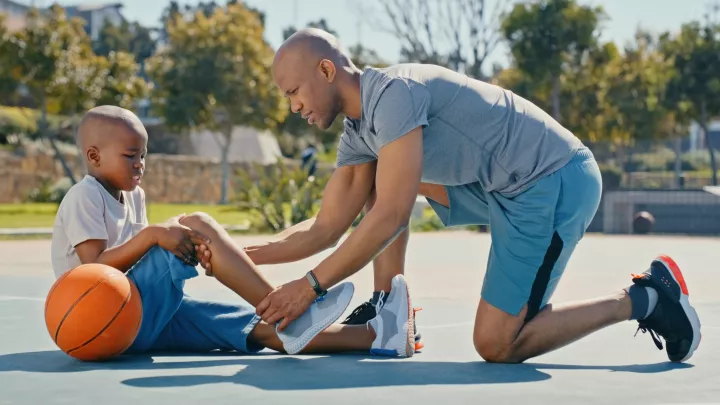Orthopedic Neuromuscular Disorder Treatments
Neuromuscular disorders affect a child’s nerves and muscles. Treating these conditions requires a high level of expertise.
Our Pediatric Orthopedic Neuromuscular Program is the largest, most comprehensive children’s program of its kind on the West Coast. We’re committed to helping your child lead an active, pain-free life.
Better Results with Our Pediatric Gait Lab
We see more than 200 children with orthopedic disorders at our accredited Motion and Sports Analysis Lab every year. Our care team uses this lab information to customize a treatment plan for your child’s unique needs.
In 9 out of 10 cases, our doctors revise their surgical plans based on the lab findings. As a result, only about 20% of children need a second surgery in 5 years. This number is half the rate as for patients who do not have this advanced test.
Nonsurgical Treatments for Neuromuscular Disorders
We begin with the least invasive therapy first. Some children with neuromuscular disorders improve with the help of:
- Botulinum toxin injections: Injections, such as Botox and Dysport, temporarily block nerve signals and help reduce muscle spasticity and tightness.
- Braces and orthotics: Your child may need leg braces, walkers or special shoe inserts (orthotics) to improve mobility. Our on-site representatives from medical device companies ensure the best fit and make adjustments as your child grows. If your child has surgery, these specialists create custom-fitted braces that are available as soon as casts come off. There’s no interruption in treatment.
- Occupational and physical therapy: Your child receives physical and occupational therapy from specialists who understand neuromuscular conditions. We show your child how to perform exercises at home. Your child gets stronger and more flexible so they can do things on their own.
Surgical Treatments for Neuromuscular Disorders
Surgeons at our nationally ranked Jackie and Gene Autry Orthopedic Center specialize in the latest surgical treatments for neuromuscular disorders. We excel at:
Tendon lengthening
Tendons are connective tissues that attach muscles to bones. Tendons and muscles rely on nerve signals to make movements. We lengthen tendons to release tight muscles that don’t loosen up with physical therapy. Depending on the severity of the problem, your child’s doctor may perform:
- Gastrocnemius recession: The surgeon cuts and lengthens the calf muscle to allow for more ankle flexibility.
- Achilles tendon lengthening: The surgeon uses a sliding lengthening process or a Z-plasty to lengthen the Achilles tendon. A Z-plasty involves making a Z-shaped incision in the Achilles tendon. As the tendon stretches, the incision grows longer. Stitches hold the newly-stretched tendon in place.
After surgery, your child will be in a lower leg cast for up to 6 weeks. Your child may need braces for a short time after cast removal. Depending on your child’s specific walking ability and needs, braces may or may not be needed long term.
Tendon transfers
Tendon transfer helps children who have tendons that pull too hard in one direction. This problem can lead to joint deformities that limit range of motion. Your child’s surgeon moves half of a functioning tendon and reattaches it to balance the pull. Sometimes doctors have to lengthen the tendon, cut it (tenotomy) or cut muscle (myotomy). These steps prevent muscles from pulling too hard on the bone, leading to bone and joint deformity or a dislocated joint.
Bone surgery (osteotomy)
Some children with abnormal walking patterns or foot deformities need osteotomy, or bone surgery. This procedure realigns bones and joints that cause pain and make walking and movement difficult. The procedure is commonly used to treat hip problems and prevent hip dislocations. Children with cerebral palsy may occasionally benefit from a bone fusion procedure called arthrodesis. We fuse together bones in the foot into one immovable joint to improve your child’s ability to walk.
Relocation of dislocated joints
Certain neuromuscular disorders like muscular dystrophy, cerebral palsy and spinal muscular atrophy can cause hip joints to partially or completely slip out of place. This condition is known as neuromuscular hip dysplasia. We have decades of experience treating this problem. Children who get hip surgery at Children’s Hospital Los Angeles recover quickly. Most kids leave the hospital in less than three days — that’s half the average of six days at other centers.
Convenient Care
We make it easier to get the care your child needs through:
- Same-day appointments with multiple specialists
- Care at medical therapy units (MTUs) throughout Southern California in partnership with California Children’s Services (CCS)
- Follow-up care services, including some diagnostic X-rays, at our specialty care centers


